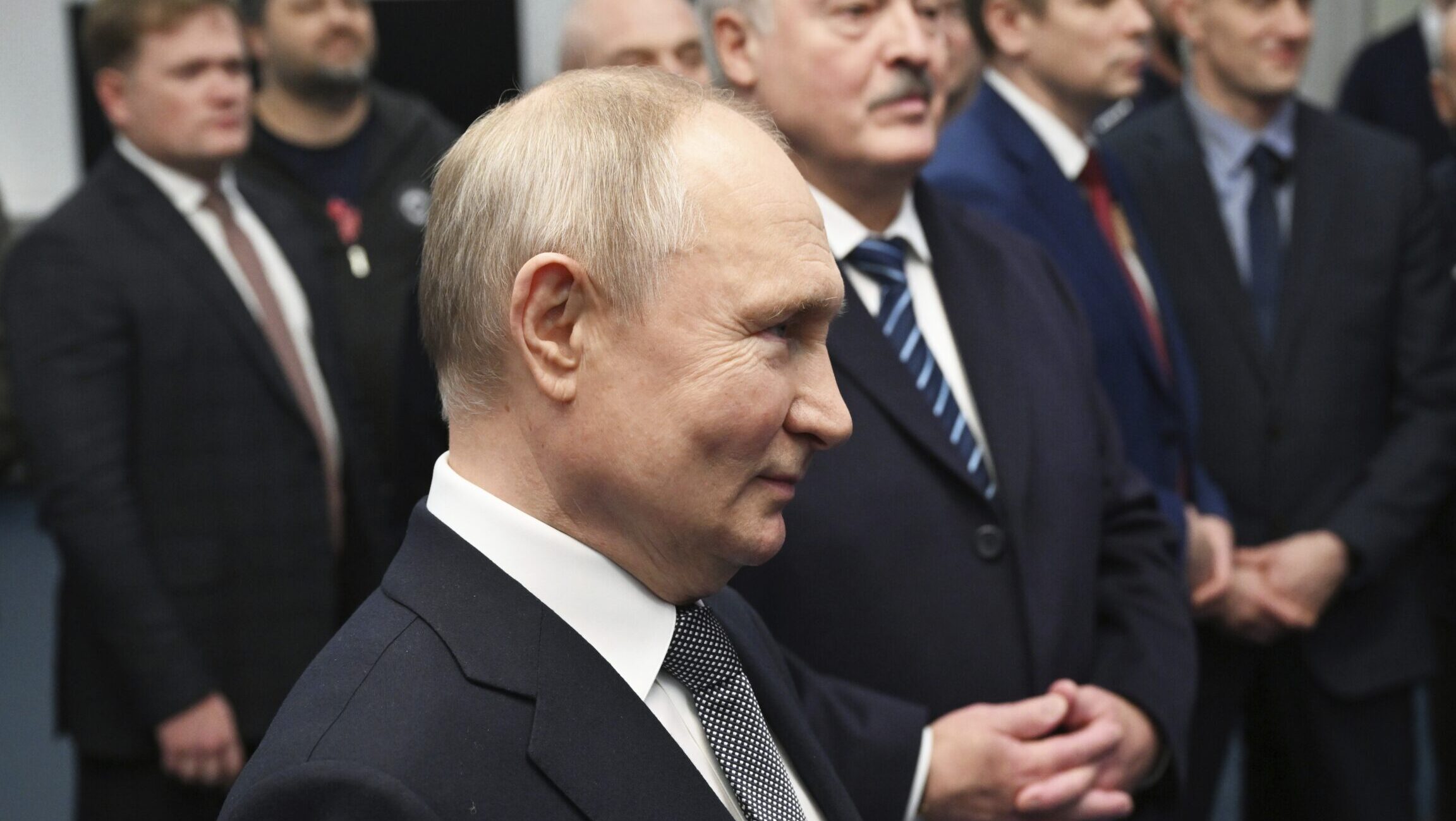US drawdown in Afghanistan includes many trainers
Jul 2, 2012, 5:40 PM
Associated Press
CAMP LEATHERNECK, Afghanistan (AP) – For today’s drill, an instructor explains, the Taliban will be played by U.S. Marines, and the “village” will be just down from the driving practice loop.
An Afghan police officer uses a stick to point out targets to his team on a map drawn in the dirt. They grab their weapons and head out, taking cover behind a berm. A pickup truck drives up. The Afghans take aim and mimic the sound of a machine gun. The Marines tumble out of the vehicle, grabbing their chests as they fall to the ground.
That’s a successful day at the U.S. Marine-run Joint Sustainment Academy in southwestern Afghanistan, which has been offering supplementary training on weapons, specialized skills and unit leadership to Afghan soldiers and police since 2009. The Afghans who attend the academy say they learn things that were never taught in their official training: how to handle different weapons and how to organize a patrol or an ambush.
But now, even as U.S. officials talk about their commitment to training and advising Afghan security forces well past 2014, the Joint Sustainment Academy is preparing to shut down.
Officials in the U.S. talking about the need to decrease combat operations in Afghanistan have been much more reticent to highlight one aspect of the drawdown: that plenty of U.S. advisers and mentors are also leaving.
Those who stay will be hopping in and out of a number of Afghan units rather than being embedded with one group _ a move that is being described as a way to get Afghan forces to take more responsibility, but which also follows a string of turncoat attacks this year by Afghan forces against their Western counterparts.
“Someone made the decision, `OK, I’m going to only have the personnel for this piece,'” said Lt. Col. Mike Cromwell, the director of the academy at a U.S. base in Helmand province, as he watched an Afghan police officer brief trainees on the day’s mission. “It just means fewer people. It’s part of the overall drawdown.”
Cromwell and the 31 other American service members running the academy end their tour at the beginning of 2013, and they have been told they won’t be replaced. They say it’s an opportunity to pass the torch to the Afghan trainers at the academy. But, Cromwell explains, the academy as it exists on Camp Leatherneck is closing.
The Marines are just hoping that the Afghan army and police see the value in what they’ve been teaching and incorporate it into their existing training centers at a nearby army base and at a police facility in the provincial capital.
“As we ramp down, those centers are the longer term solutions,” Cromwell said.
Training classes have already shrunk at the academy. Last year, the Marine academy trained 2,547 Afghans. Cromwell expects to train less than half that _ about 1,000 _ by the end of this year.
“We may not make that,” Cromwell said. And this is even though the academy is focused now on training Afghan soldiers and police to become trainers themselves _ a goal that NATO and U.S. forces say is one of their most important priorities.
Ever since President Barack Obama announced the drawdown of U.S. forces in Afghanistan a year ago, his administration has stressed that it does not mean an abandonment of Afghanistan. Combat troops are supposed to decrease as more forces move into a support role. But less advertised is the fact that the U.S. is also decreasing the number of advisers and trainers it is sending to Afghanistan.
According to an April report submitted to Congress, the U.S. forces that make up most of the mentoring teams that operate alongside Afghan troops are being cut with the idea that other NATO nations will fill the gap.
“The United States provides the (Afghan security forces) with the majority of required mentor teams. The drawdown in U.S. forces will result in a decreased number of partnered units, creating additional requirements for other coalition partners,” the report states. The plan is to increase the overall number of advisers, using contributions from other allies. But even though the Americans that make up about 63 percent of the adviser teams have already started leaving, NATO is still working to get commitments from other nations.
“The nations have not finalized how much they’re going to provide, and which nations,” said Maj. Martyn Crighton, a spokesman for the international military force. He said more than 20 nations had agreed to participate, but few had made firm troop commitments.
The plan is to move from a one-to-one mentor ratio to a “one-to-many” ratio in which small teams of up to 18 specialized advisers jump between Afghan units teaching them specific skills. That also leaves open the possibility of keeping those advisers at more of a distance from Afghan forces _ a move that would not be surprising following the recent rash of “green-on-blue” attacks by Afghan forces. In the most recent such attack, an Afghan police officer turned his weapon on NATO police advisers in Helmand province Sunday, killing three British soldiers.
Helmand and Nimroz province, the area covered by U.S. Marines, has already seen troops start to leave, and bigger reductions are coming. The Afghan commander for the region, Maj. Gen. Saad Malouk, said he expects at least 10,000 U.S. troops to depart the southwestern region in September _ nearly half of the 23,000 announced by the Obama administration.
The general overseeing the two southwestern provinces says the trainer cuts don’t worry him.
“We’re handing over this part of the training,” said Maj. Gen. Mark Gurganus. “We will continue to have security force assistance teams _ out with the different battalions and brigades and with our police _ that will continue to mentor, advise and train as we move forward toward the end of 2014 and potentially beyond.”
Gurganus would not confirm exact numbers of U.S. troops leaving his operating area, but said it is “significant.” U.S. spokesmen would not say exactly how many U.S. mentors are leaving.
The U.S. also has already started decreasing its role in the formal training that all Afghan soldiers and police must undertake. U.S. troops under what’s called the NATO Training Mission in Afghanistan started drawing down from 3,300 troops this winter and will continue to decrease through the fall, said Lt. Col. Tim Stauffer, a spokesman for the training mission.
There are about 2,500 U.S. troops under the training mission banner, and that will be cut by about 7 percent by the end September, he said.
“As we’re building the capacity for the Afghans to be able to train themselves, the natural next step would be for us to reduce our footprint, and as a result the Afghans would be able to stand on their own and conduct their own training,” Stauffer said.
But it’s unclear if the Afghan government has the drive to maintain or build on the type of intensive training being provided by coalition troops. An elite military academy is in the works in Kabul, but it won’t be up and running until 2013, and then it’s hard to know how helpful it would be.
Gurganus noted that a major barrier to additional training is finding the time to take Afghan soldiers out of combat. And the men who have gone through the specialty academy at Leatherneck say they’ve learned skills from the Marines that go far beyond any Afghan offerings.
“In regular training, we only learned how to use a Kalashnikov and a pistol. Here we learn different weapons. We also learn driving skills, ambush tactics, how to read a map,” said Azizularahman Habibi, a 21-year-old police officer serving in Helmand’s Nawa district. “We learn to look at the weather, the terrain, where the friendly and unfriendly forces are, how to execute a plan step by step. I had never done any of this before.”
(Copyright 2012 The Associated Press. All rights reserved. This material may not be published, broadcast, rewritten or redistributed.)









